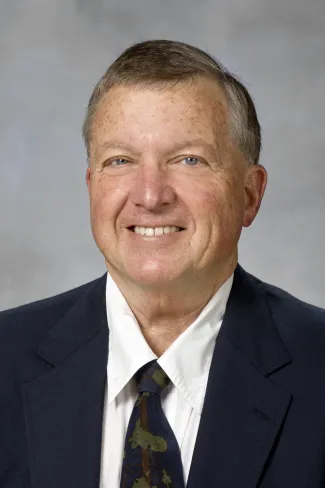After a combined 86 years of training future biologists, two lifelong conservationists, William Caire with the University of Central Oklahoma and William Matthews with the University of Oklahoma, are preparing to retire later this year. Both professors have been invaluable collaborators with the Oklahoma Department of Wildlife Conservation’s Wildlife Diversity Program and have volunteered their time and expertise by serving on its Technical Committee since its formation in 1985.

Recognized as an authority on Oklahoma's bat populations, Caire joined UCO College of Mathematics and Science in 1976. In addition to teaching all levels of biology for nonmajors, he also teaches mammalogy for upperclassmen. Caire's research interests have centered on mammalian ecology and have resulted in publications with many student co-authors in the areas of rodent and bat taxonomy, food habits, parasites, physiology, and distributional surveys of mammals in the Southwest.
Caire was instrumental in the development of UCO's Selman Living Lab in northwestern Oklahoma, a 320-acre field research station that includes bat caves, classrooms, lodging facilities and an observatory. He served as director of the lab until 2013. He has also co-authored the comprehensive "Mammals of Oklahoma," and is a valuable member of the Oklahoma Bat Coordinating Team. He has been awarded research grants from the Oklahoma Department of Wildlife Conservation to estimate the population of Mexican free-tailed bats at important maternity roosts in Oklahoma and to determine the summer ecology of bats in southeastern Oklahoma.
Caire is the most recent recipient of the Oklahoma Medal for Excellence in teaching at a regional university or community college. When interviewed by Oklahoma Foundation for Excellence, Caire said one of his objectives is to pass his curiosity down to his students so they will be lifelong learners.

Matthews, a prominent fisheries biologist, joined the OU's Department of Zoology in 1977. Throughout his career, he has taught courses in aquatic ecology and ichthyology (the study of fishes) and conducted research focused on stream and river fishes. He has mentored and trained 18 graduate students and has been active in professional organizations including the American Fisheries Society and the Southwestern Association of Naturalists.
Matthews works as a team with his wife Edie Marsh-Matthews, who also is a professional fisheries biologist and a faculty member in OU’s Department of Zoology. Together, they have long-term connections with the University of Oklahoma's Biological Station on the north shore of Lake Texoma, and the Sam Noble Oklahoma Museum of Natural History, where they have served as the curators of the Fishes Collection. They are currently wrapping up work on a research grant that they received from the Wildlife Department to survey the fish communities of the Clear Boggy, Muddy Boggy, Kiamichi and Little River drainages in Oklahoma. Previous collaborations with the Wildlife Department include sport and forage fish assessments in the upper Red River, fisheries research in Lake Texoma, and ecological research focused on the Arkansas River Shiner and the Leopard Darter. Both will retire at the end of the fall semester.
Matthews has received many conservation achievement awards, including the 2010 Joe Hogan Lifetime Achievement Award from the Arkansas Chapter of the American Fisheries Society.
The Wildlife Department is grateful for the dedication of these conservationists and their lasting work, furthering our knowledge of Oklahoma's wildlife.